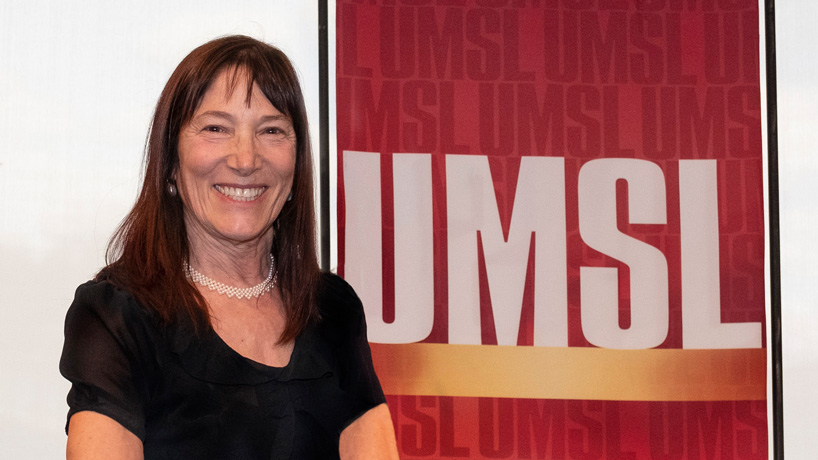
Retired Teaching Professor Kathleen Nigro led a Black History Month presentation titled “Gone with the Wind: Rethinking Gender in Missouri’s WPA Slave Narratives.” (Photo by August Jennewein)
When someone’s telling your story, they’re not always telling your truth. That is especially true about the interviews of formerly enslaved African Americans that were collected by the white writers in a 1930s federal writing project.
That topic was explored by Kathleen Nigro, a retired teaching professor of gender studies at the University of Missouri–St. Louis, last Tuesday during an online Black History Month presentation titled “Gone with the Wind: Rethinking Gender in Missouri’s WPA Slave Narratives.”
Nigro, who served as director of the Gender Studies Program, said that the narratives of enslaved Black people that were collected by a Works Progress Administration federal writer’s project contained racist viewpoints that skewed how they were recorded.
She said “stereotypes about happy or contented enslaved souls” at the time contributed to misperceptions, resulting in today’s scholars seeing the narratives as “being dictated rather than being autobiographical.”
“Yes slavery was abolished, but we all know Jim Crow laws were put in place so we still have a social system that still oppressed just as strongly Black people,” she said. “The Civil War did not end oppression and racism and exclusion, and therefore, the people who did the interviews I think very few of them were enlightened in terms of social justice.”
Nigro acknowledged at the start of the zoom session that the discussion would include “difficult topics.”
“It isn’t easy to talk about this at all,” she said. “But if we don’t talk about it, nothing will change.”
“America didn’t start racism; it is millennial old,” she added. “But what I’m going to talk to you about today is how we embraced it.”
Nigro discussed the history of enslaved Black people as the legal property of slave owners. She talked about the impact of placing monetary value on the labor of Black men and the reproductive ability of Black women and how that resulted in centuries of abuse and exploitation.
Nigro dedicated the presentation to an enslaved Missouri woman who waged a battle in the 1850s against racial oppression and sexual exploitation.
Celia was 19 years old when she was hung for the murder of her owner Robert Newsome. Purchased by Newsome at the age of 14, she was forced into a sexual relationship that resulted in two children. Celia was pregnant with a third child when she killed Newsome by hitting him with a tree branch.
Nigro cited author Annette Gordon Reed’s parallel between Celia’s story and that of Sally Hemmings, the enslaved woman who was the mother to some of Thomas Jefferson’s children. She said that some people have the notion that sexual relationships between enslaved people and slave owners were consensual.
“There is no such thing as a benevolent or benign slave owner,” Nigro added later. “Consider how people’s lives are affected when all the power is in the hands of the privileged.”
She told attendees, who were mostly Pierre Laclede Honors College students, that this country’s history of enslavement is closer than we tend to think – both socially and geographically.
Nigro mentioned the McClure Model Farm in Boonville, Missouri, a half hour wast of Columbia. Celia was executed in Callaway County, Missouri, just an hour-and-a-half down I-70 from St. Louis. Another enslaved teen was executed for murder in Crawford County, near Steelville. And in Clay County, a woman named Annice was the first enslaved woman to be executed in Missouri.
Closer to home, the slave quarters of President Ulysses S. Grant’s White Haven estate are an exhibit at Grant’s Farm in St. Louis County.
Nigro interspersed her presentation with images of enslaved persons, former sites of slave quarters and quotes by Frederick Douglass and suggested reading from author Ibram X. Kendi. She said it’s important for students to read more and have discussions about race and inclusion.
“Because we have not told those stories we are not advancing. We are resisting the face of America changing,” she said, and added: “When you hang that picture of George Washington in the classroom, can I also see Martin Luther King Jr.? Can I also see Sacagawea? Can I see some of those other leaders so that I understand that that the face of power doesn’t always look like George Washington.”














